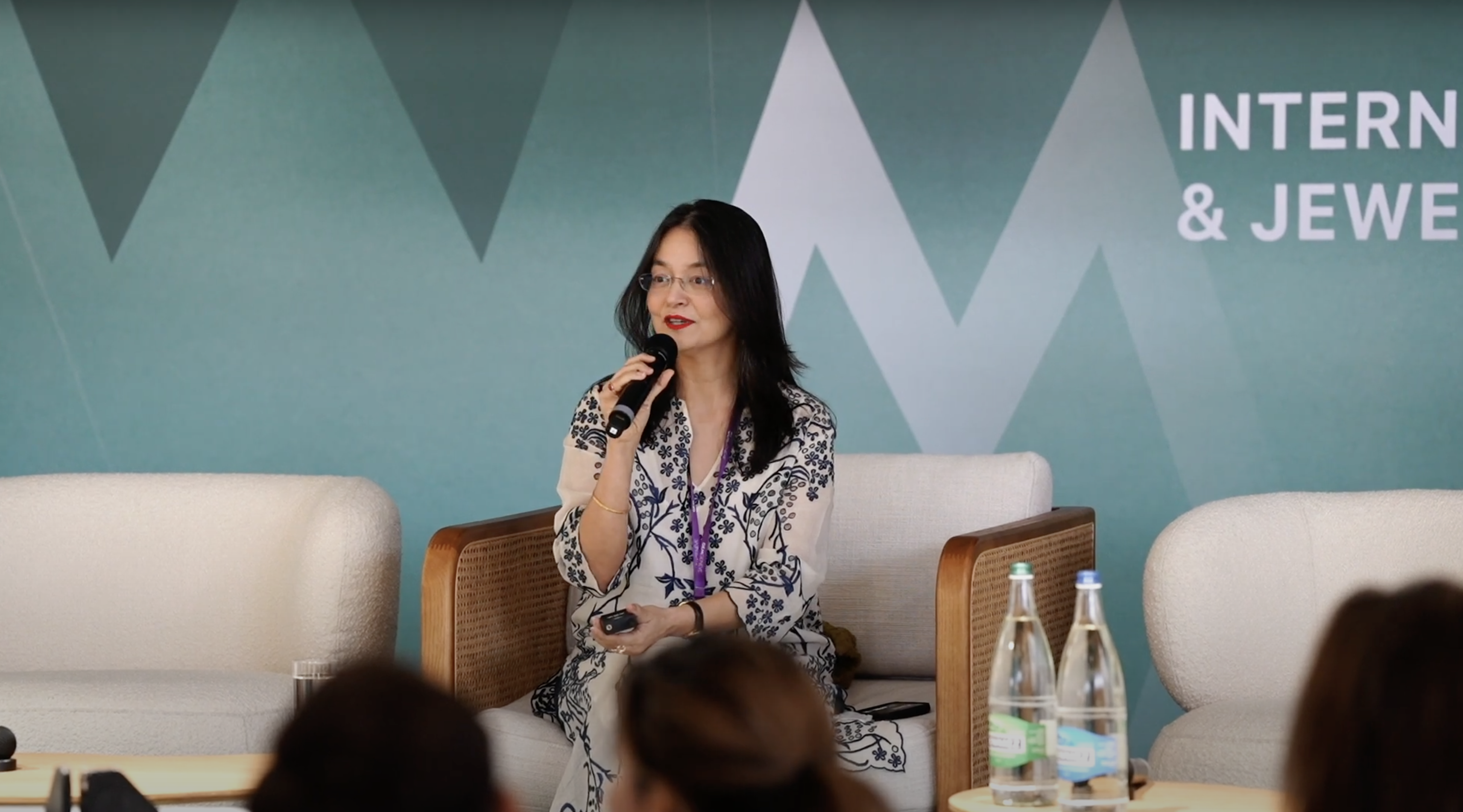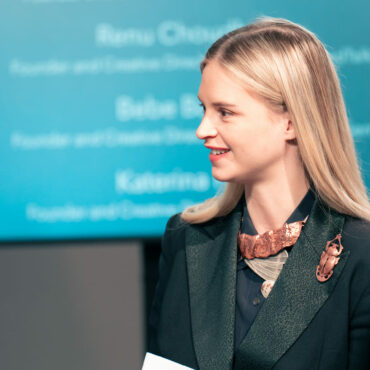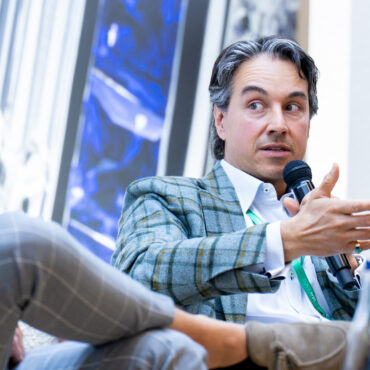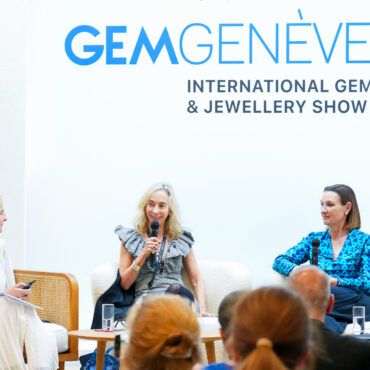The panel discussion on “The Art and Science of Gemstone Cutting,” held at GemGenève, was a deeply engaging and multifaceted exploration of one of the most fascinating aspects of the gemstone industry. Moderated by Richa Goyal Sikri—a journalist, storyteller, gemologist, and soon-to-be author—the event gathered a distinguished panel of experts: François Garaude, founder of Garaude; Rocco Gay, CEO of Petramundi; Dharmendra Tank, partner at Tank Fine Gems; and David Nassi, president of 100% Natural Ltd. Together, they shared insights into the technical, artistic, historical, and ethical dimensions of their work, offering a rich narrative about the evolution and future of gemstone cutting.
The discussion began with Richa introducing the topic, expressing her lifelong fascination with the transformative journey of gemstones. She described how raw, unpolished rocks are meticulously shaped into valuable, collectable gems. This transformation, she noted, has been central to the art of gem cutting, a craft historically imbued with mystery and reverence. In ancient societies, gem cutters were often held in high esteem for their unique ability to unlock the potential of nature’s treasures.
Richa then introduced the panellists, each of whom brought a wealth of experience and a unique perspective to the discussion. François Garaude, a French gem dealer with over four decades of experience, began his career in Brazil and eventually established his workshop in Bangkok. Rocco Gay, representing the renowned Petramundi company in Italy, shared insights into the rich traditions of Valenza, a global hub for jewellery manufacturing. Dharmendra Tank, a sixth-generation at Tank Fine Gems in Jaipur, India, spoke about his city’s vibrant gem-cutting industry. Finally, David Nassi, a third-generation gem merchant and award-winning lapidary artist based in New York, offered a contemporary perspective on the craft.
The conversation unfolded in layers, beginning with a focus on the regional and historical contexts of gemstone cutting. Rocco offered a detailed account of Valenza, describing it as a place of extraordinary synergy where every aspect of jewellery production—from design to finishing—coexists in a concentrated district. He highlighted the logistical advantages of being close to prominent luxury brands such as Bulgari, Cartier, and LVMH Group, which rely on Valenza’s expertise to produce their finest collections.
François recounted his personal journey into the world of gemstones, tracing his beginnings in Brazil, where he dealt in emeralds. Following a crisis in the emerald market during the 1990s, he transitioned to sourcing and cutting gemstones in Bangkok. He explained how the city’s skilled artisans and thriving gem trade offered the perfect environment to hone his craft. Despite the availability of advanced machinery, François emphasised his reliance on traditional, artisanal techniques, which allowed him to engage with the “soul” of each stone.
Mr. Tank shed light on Jaipur’s unique role in the global gem industry, describing it as a city that seamlessly combines tradition and innovation. He explained how Jaipur’s artisans have mastered the ability to work with stones of varying quality, creating everything from intricately carved collectables to finely faceted gems. While modern technology plays a role in the city’s gem-cutting operations, much of the work remains manual, preserving the artistry and heritage of the craft.
David provided insights into the boutique gem-cutting scene in New York, where precision and artistry define the work of a small but dedicated community. He described his own process of recutting stones, often transforming flawed or dated pieces into dazzling works of art. Drawing inspiration from Art Deco aesthetics, David demonstrated how contemporary lapidaries can reimagine traditional designs while maintaining a commitment to excellence.
As the discussion moved into technical considerations, the panellists explored the interplay between technology and tradition. Rocco detailed the advanced machinery used in his operations, including CNC and ultrasonic tools, which enable precision and efficiency in mass production. However, he acknowledged that even the most sophisticated technology cannot replace the human touch, particularly when it comes to analysing and enhancing the natural beauty of a stone.
François offered a philosophical perspective, arguing that gem cutting is as much about intuition as it is about technique. He described the process of engaging with a stone as a journey into its internal “space,” where light and structure interact to create a sense of depth and brilliance. This approach, he explained, requires a balance between simplicity and complexity, with a focus on enhancing the stone’s natural characteristics rather than overwhelming them with excessive faceting.
Mr. Tank elaborated on the manual processes still prevalent in Jaipur, showcasing how Indian artisans rely on their experience and instinct to make critical decisions about a stone’s cut. He described the importance of managing inclusions, which can significantly impact a gem’s appearance and value. Even with the availability of mapping technology, the final steps of faceting and polishing often depend on the skill and judgment of the cutter.
David demonstrated his approach to recutting, using an old Swiss-made vertical machine to achieve precise results. He explained how he analyses a stone’s angles and facet structure, often reimagining it to maximise its colour and brilliance. His work highlights the potential of recutting as a means of transforming undervalued stones into high-quality pieces that appeal to modern tastes.
A recurring theme throughout the discussion was the evolving preferences of consumers. David observed a growing demand for asymmetrical and amorphous cuts, which challenge traditional notions of symmetry. Rocco noted that major luxury brands often dictate these trends, introducing new materials and designs that influence the broader market. While some panellists expressed a preference for classic cuts, they acknowledged the artistic potential of more unconventional styles.
The panellists also addressed the challenges facing the industry, particularly the scarcity of high-quality rough gemstones. François noted that rising demand and limited supply have driven prices up, creating tension between buyers and sellers. Rocco discussed the complexities of achieving traceability and sustainability, especially in an industry that relies heavily on small-scale and artisanal mining. He highlighted the ethical dilemmas involved in sourcing materials, pointing out that full traceability remains a significant challenge.
Despite these difficulties, the panellists expressed optimism about the future. Mr. Tank emphasised the importance of preserving artisanal techniques alongside industrial-scale innovations, suggesting that a balanced approach could ensure the industry’s sustainability. David highlighted the opportunities presented by recutting, which allows lapidaries to breathe new life into existing stones. Rocco underscored the need for collaboration between designers, cutters, and manufacturers, arguing that teamwork could lead to groundbreaking advancements in the field.
In concluding remarks, François offered a poetic reflection on the essence of gemstone cutting. He described gemstones as a fusion of time and space, where light becomes both the medium and the message. This interplay of science, artistry, and emotion, he argued, is what makes the craft of gem cutting truly timeless.
The panel discussion served as a comprehensive overview of the gemstone industry, blending historical perspectives with contemporary insights. It celebrated the artisans and innovators who continue to push the boundaries of their craft, ensuring that the art and science of gemstone cutting remain as captivating as the stones themselves.
Moderator:
Richa Goyal Sikri (Journalist, Storyteller, Author and Gemmologist)
With:
François Garaude (Founder of Garaude, a French company with gem cutting and polishing operations in Bangkok)
David Nassi (President of 100% Natural Ltd., 3rd generation gem merchant, Lapidary Artist)
Rocco Gay (Gemmologist, CEO of Petramundi S.r.l., Italy Ambassador for ICA)
Dharmendra Tank (6th generation partner, Tank Fine Gems)





